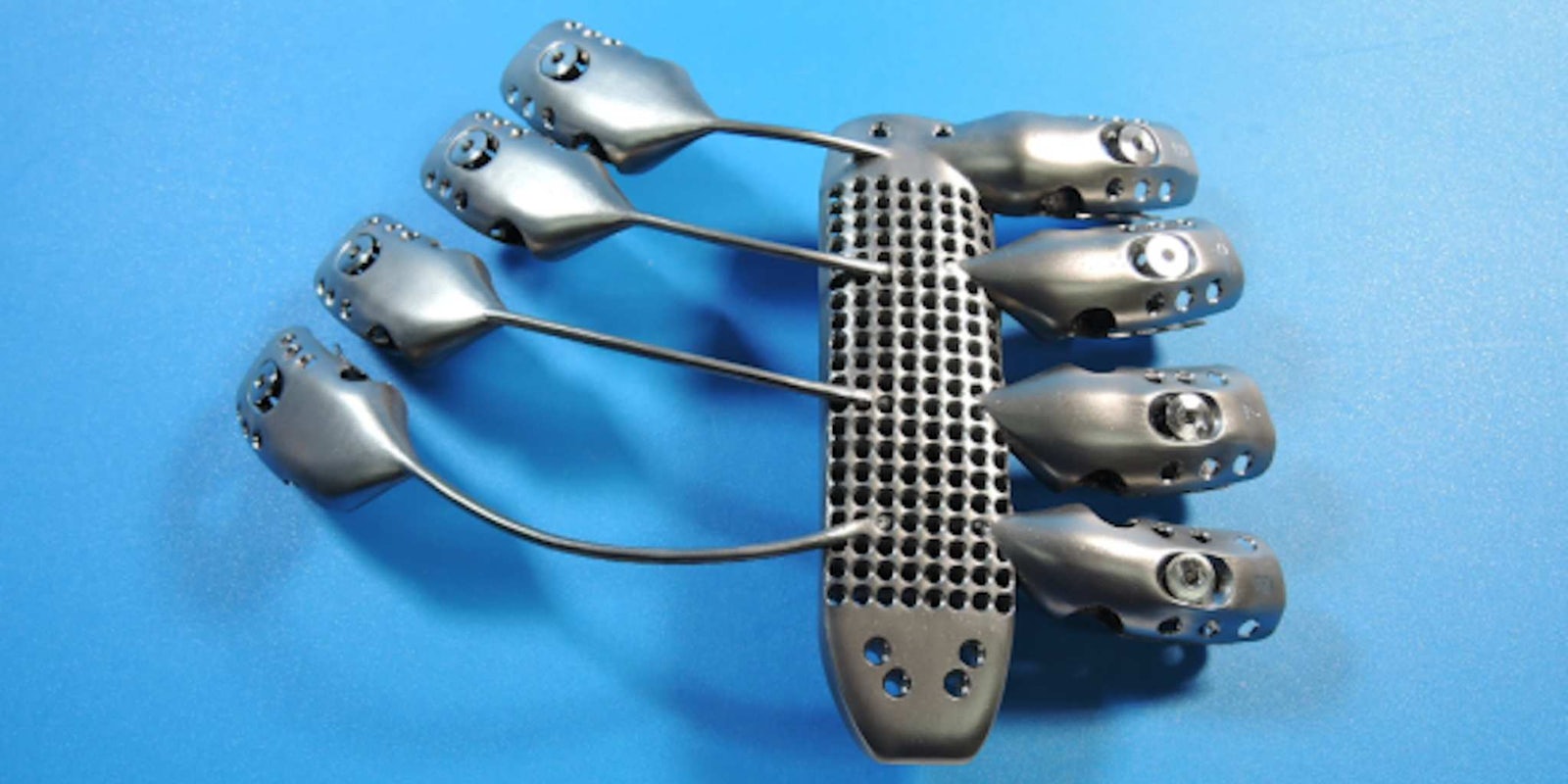The wonders of 3D printing can turn an average person into a cyborg—radically improving their quality of life in the process.
A 54-year-old cancer patient in Spain is now wearing a custom rib cage that was 3D-printed out of titanium in Australia.
The patient’s surgical team at Salamanca University had to remove his ribs and breastplate in order to access tumors in his chest cavity. Such procedures are usually completed by inserting a bone-shaped titanium form back into the patient’s body to replace the missing skeleton, but those tend to come loose over time.
Instead, the surgeons contacted an Australian medical company called Anatomics. The company used the patient’s CT scans to digitally design a titanium rib cage assembly that would perfectly replace the missing parts of his skeleton. The makeshift body part was even designed such that it could be permanently screwed into the man’s skeleton—it was never coming loose.
Anatomics fabricated the assembly with help from CSIRO, Australia’s federal agency for scientific research, borrowing its electron beam metal printer to bring it to life. Such printers are specialized, high-end devices that work with metal the way desktop 3-D printers work with plastic—CSIRO’s is a $920,000 machine made by a company called Arcam. Such printers interpret a complex shape as a series of layers, then fire a computer-controlled electron beam to melt layers of powdered metal together into those layers.
CNET reports that the cancer patient has been discharged from the hospital and is recovering well from the surgery.
Titanium rib cages only scratch the surface of what’s possible for 3D printing in medicine. We’ve already seen a 3D-printed skull transplant, a printer that applies new skin directly onto burn victims, and even artificial blood vessels.
A doctor in Egypt is printing low-cost stethoscopes to get around the medical supply shortages caused by Hamas blockades between Israel and Egypt.
And 3D-printed medication stands to change a lot about how we interact with prescription drugs in the future. The first 3D-printed pills are already FDA-approved, beckoning us toward a day where our medicines are tailored to us on an individual basis; instead of taking a variety of medications for different ailments, we may 3D print them together as the one pill we need that day.
From jaws to heel implants to custom-printed hips, the medical applications of 3D printing technology are valuable and diverse; it seems certain to become a mainstay for how medicine is practiced in the future.
Perhaps at such a time, a custom 3D-printed titanium rib cage will only cost a co-pay.


